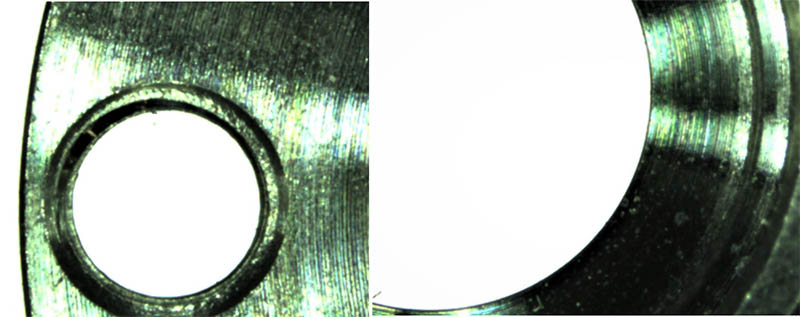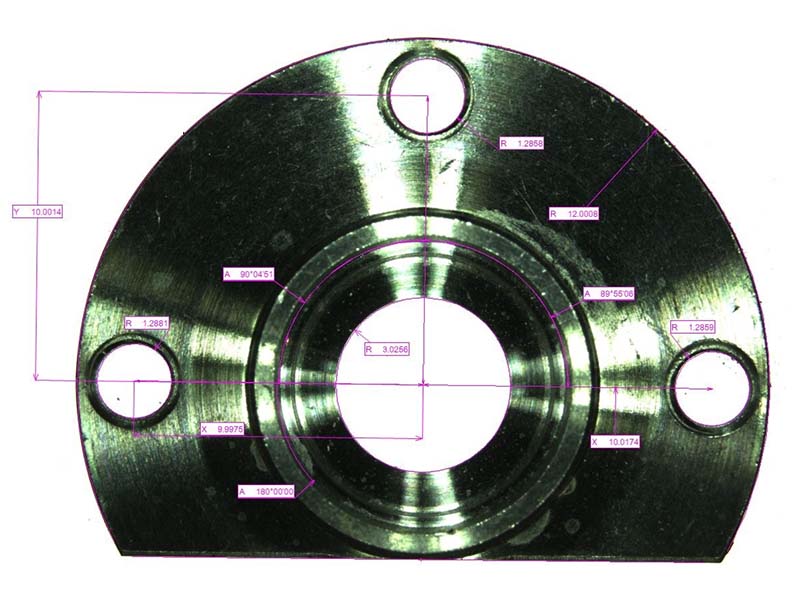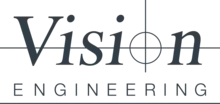Vision… Isn’t the sense of sight fantastic? One could argue that the most effective way of understanding something is through seeing it. Sometimes no amount of reading or listening is sufficient to explain something with which we are unfamiliar. Then we see it and go “Ah!” – All becomes clear.
Yet to truly understand, we need to ensure we see the whole picture. Imagine looking at a beautiful sunset on a lazy Mediterranean evening. Can you imagine how insignificant it would be to see only a fraction of the sun, rather than the whole of the crimson orb slowly sinking beneath the horizon? Or imagine seeing a person jumping up and down and making incomprehensible mouth gestures. We would surely think that he or she is a lunatic, until we pan out and see thousands of other revellers, dancing to music played on stage. But enough with the analogies… Simply put, our field of view (FOV) is what puts things into perspective! The wider our vision gets, the more we see and explore, and one might claim, the wiser we become (!).
Although it may sound a little fanciful, the same can be said about measurement and inspection
The clearer we can see artefacts, the easier we can pick out the features that need measuring and identify defects. Moreover, the more of it we can see, the quicker we can complete the tasks of measurement or inspection.
Manufacturers are fortunate to have so many options in terms of video measurement and inspection systems. These systems offer various methods of measurement and capabilities through advanced imaging technologies and software development, which in turn enable manufacturers to achieve consistent quality in their production and reduce scrap. However, the need for accuracy and quality often causes one of the most critical issues facing manufacturers today – that is long measurement routines, which ultimately slow down delivery of product and may cause other issues further up the value chain.
If we look at measurements done on optical and video measurement systems, one of the reasons measurement routines take so long is that generally, the FOV displayed at any one time is small; therefore the components must be repositioned multiple times so all of the critical features can be measured. This is quite normal, as most video measurements are done in relatively high magnification, allowing smaller features to be measured more accurately.
Increasing FOV and reducing measurement time
In recent years, most manufacturers of measuring equipment have come up with new solutions to help increase FOV and reduce measurement time as well as operator involvement. These systems often utilise telecentric lenses that offer larger fields of view and low distortion. Telecentric lenses also offer larger depth of field compared to standard macro lenses so that more of the features on a component is in focus. One of the greatest features of measurement software packages available today is that features visible inside the field of view -and in focus- can be measured almost instantly. This capability is often under-utilised due to video measurement systems equipped with zoom lenses offering small field of view sizes. Telecentric lenses, coupled with instant measurement capabilities of measurement software make these “Field of View (FOV) measuring systems” highly practical and desirable to many customers.
Just like many other challenges that manufacturers must overcome on a daily basis, we cannot approach all measurement challenges with a “one size fits all” attitude. Understanding the pros and cons of multiple methods of video measurement allows us to use the right tools for the right job.
FOV measurement systems are great for profile measurements of components that do not have very small (e.g.less than 0.1mm diameter) features to measure, as they often lack the magnification required to measure such small features.
The images in Figure 1 below have been taken on a standard video measuring machine equipped with a macro objective. Both images show what the operator would see in the field of view. These images also show how much of the component can be measured at one time.
Figure 2 shows how the same component used in the images above would look like on a FOV measuring system fitted with a telecentric lens. Now the entire component can be displayed in the field of view and all features on the component can be measured instantly.
So, why don’t we all use telecentric lenses and cut down on measurement times significantly?
Well, to start with, the large depth of field of telecentric lenses makes them unsuitable for measurements in the Z-axis. Objectives with a narrow depth of field reduce focusing-related uncertainties and are therefore more suitable for measurements in the Z-axis. For this reason, telecentric lenses are used on video or optical measuring systems that measure in the X and Y axes only.
As mentioned previously, measuring systems fitted with telecentric optics do not offer magnification change, except for bespoke machine-vision solutions. This means that any feature that is too small to be detected by the edge detection software cannot be measured, or at best, will be measured inaccurately.
Measuring systems with the option to change magnification offer more flexibility to operators and are more suitable for companies who would like to use the same system to measure a wide range of components. Systems with large FOV’s on the other hand are perfect for companies whose priority is to measure specific parts quickly and in large volume.
To conclude, there is no one size fits all solution in measurement. Whilst measurement systems with large FOV offer great simplicity and throughput, more conventional systems with zoom optics and/or optical microscopes offer the flexibility to measure more complex parts. To ensure that you select the best system to meet your needs it is essential that you talk to industry experts and explore all of the possible alternatives. Contact the team at Vision Engineering for advice on all your metrology needs.





